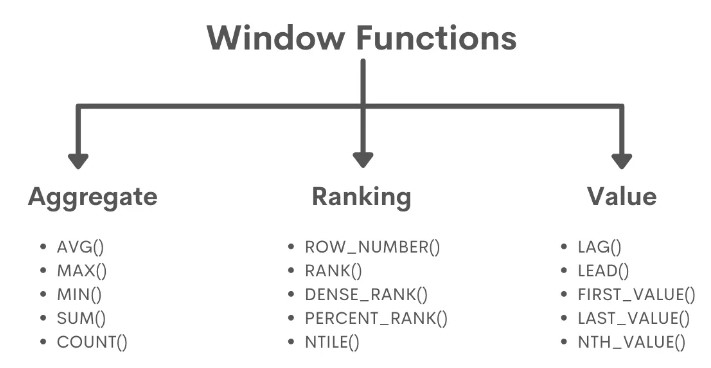If you’re working with data using SQL, chances are you’ve come across the term “windows function”. While it may seem daunting at first, windows functions are a powerful tool that can help you gain valuable insights from your data. In this article, we’ll explore what windows functions are, how they work, and some common use cases.
What are SQL Window Functions?
A SQL window function is a function that performs a calculation across a set of rows in a result set, rather than just a single row. The result of the function is then assigned to each row in the set, creating a new column in the result set.
For example, let’s say you have a table of sales data with columns for the date of the sale and the amount of the sale. You want to calculate the running total of sales for each day. Using a windows function, you could calculate this running total for each row in the table, without having to write complex SQL code.

How Do SQL Windows Functions Work?
SQL windows functions are defined using the OVER clause. The OVER clause specifies the window or subset of rows over which the function should be applied.
For example, the following SQL code calculates the running total of sales for each day:
SELECT date, amount, SUM(amount) OVER (ORDER BY date) AS running_total
FROM sales_data
FROM sales_data
In this example, the OVER clause specifies that the SUM function should be applied to all rows in the result set, ordered by date.
Common Use Cases for SQL Windows Functions
SQL windows functions can be used in a variety of scenarios. Here are some common use cases:
Running totals and aggregates
As mentioned earlier, windows functions are often used to calculate running totals and aggregates. This is useful for creating financial reports or analyzing time series data.
Ranking and percentiles
Windows functions can also be used to calculate rankings and percentiles. For example, you might want to rank your sales team by their performance or calculate the top 10% of customers by sales volume.
Moving averages and smoothing
Windows functions can also be used to calculate moving averages and smoothing functions. This is useful for analyzing trends in your data over time.
Conclusion
SQL windows functions are a powerful tool for working with data in SQL. They allow you to perform calculations across a set of rows, rather than just a single row, making them ideal for calculating running totals, rankings, and moving averages. By mastering the basics of SQL windows functions, you can take your data analysis to the next level.
FAQs
-
Can windows functions be used with GROUP BY clauses? Yes, windows functions can be used with GROUP BY clauses to perform calculations within each group.
-
Are windows functions supported by all SQL databases? Windows functions are supported by most modern SQL databases, including MySQL, PostgreSQL, and SQL Server.
-
Can I use multiple windows functions in the same SQL statement? Yes, you can use multiple windows functions in the same SQL statement.
-
Are there any performance considerations when using windows functions? As with any SQL function, there may be performance considerations when using windows functions, especially with large datasets. It’s always a good idea to test your queries on a representative dataset before using them in production.
-
Can windows functions be used in conjunction with other SQL functions? Yes, windows functions can be used in conjunction with other SQL functions, such as GROUP BY and ORDER BY.

What’s Happening i am new to this, I stumbled upon this I’ve found It positively useful and it has helped me out loads. I hope to contribute & aid other users like its aided me. Great job.